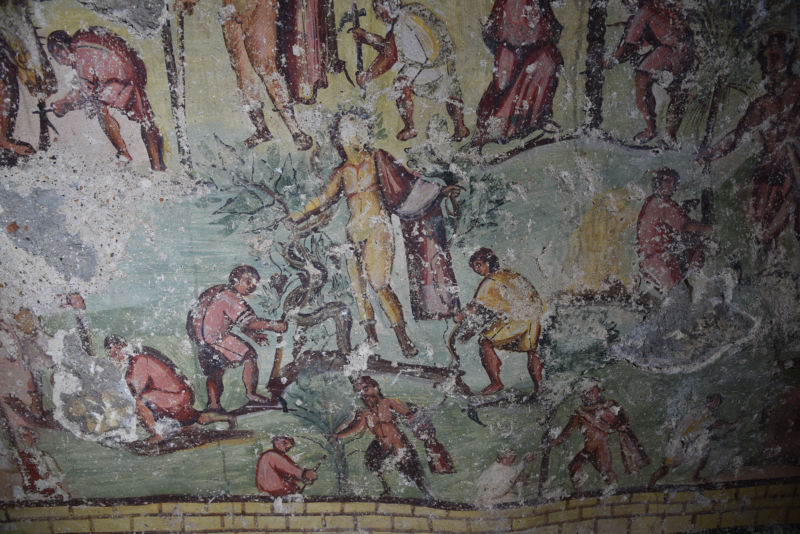Ancient “comic strip” depicts the founding of a Roman city

Enlarge / Dionysus lends a hand to clear the future site of Capitolias. (credit: (C) CNRS HiSoMA)
A recently discovered Roman tomb in northern Jordan may look pretty familiar to comic readers. The 2,000-year-old paintings that adorn the walls of the tomb's main chamber tell a story in five panels, each inscribed with dialog from some of the characters. While there are no superheroes or crime-fighting, several Roman gods feature in the action, and a few people plummet to their deaths from ramparts. Archaeologists say the five panels depict the founding of the city of Capitolias in the 1st century CE.
The founding of a cityThe tomb is one of several archaeological sites from ancient Capitolias unearthed by a November 2016 road construction project in what is now the city of Bayt Ras. The roadwork also revealed several other tombs nearby, as well as an ancient theater and a row of columns. When the tomb was dug into the hillside, Capitolias was part of the Roman Empire but in a region still more heavily influenced by Greek culture.
The version of events painted on three walls of the 52-square-meter funerary chambers probably takes some poetic license with Capitolias' history. It seems unlikely that the city's founders literally attended a banquet of the Roman gods, serving refreshments while asking their advice on a good spot to build a city. In the first panel, on a wall to the left of the tomb's entrance, larger-than-life Roman gods recline on couches while humans offer them food and drink. More likely, the city's founders would have made offerings at a temple before construction began.
Read 10 remaining paragraphs | Comments